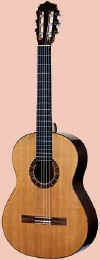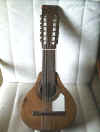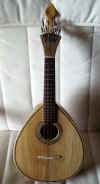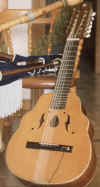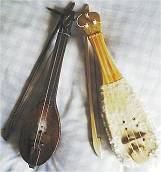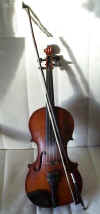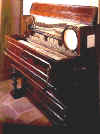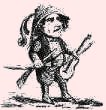|
Click on the images to enlarge them
| Bandurria: The bandurria is a plectrum plucked cordophone with presence in practically the whole peninsula, except in Portugal, where it is substituted by the "bandolim" or mandolin. It consists of twelve metallic strings (six double) tuned by quarters and it is made to sound it with a spike or plectrum. Traditionally it forms part of serenaders or string groups, together with the guitar and the lute, of similar characteristic, but with a bass sound. It was also common in street musicians and blind men. In the picture, you can view an andalusian restored instrument from 1882. | |
|
|
| Laúd: The laúd (lute) is a plectrum plucked chordophone with presence in practically the whole peninsula, except in Portugal, where it is substituted by the mandola. It consists of twelve metallic strings (six double), as the bandurria, but the mast is more long that the previous instrument. Traditionally it forms part of serenaders or folk string groups, together with the guitar and the bandurria, giving different voices to the tunes. Their tuning is also by quarters, like in the bandurria. | |
|
|
| Violín: The violin is a bowed chordophone. It consists of 4 metal strings or gut tuned by fifths. It is a classic instrument that is also used in folk music, although the tunings and forms of playing them are different to the classic ways. In Spain they were scarce interpreters of traditional violin in Galicia, Asturias and Cantabria, where it was accompanied of tambourine. Also in the south, in Málaga where is played by the "verdiales" and in Almería and Murcia played by the "cuadrillas". Anyway, it is not an instrument very used traditionally, only it is found in these punctual cases. In Portugal a similar instrument to the violin is played but with a smallest mast and of high tone -a octave above the violin - called "Rabeca chuleira ". | |
|
|
| CHORDOPHONES |
|---|
